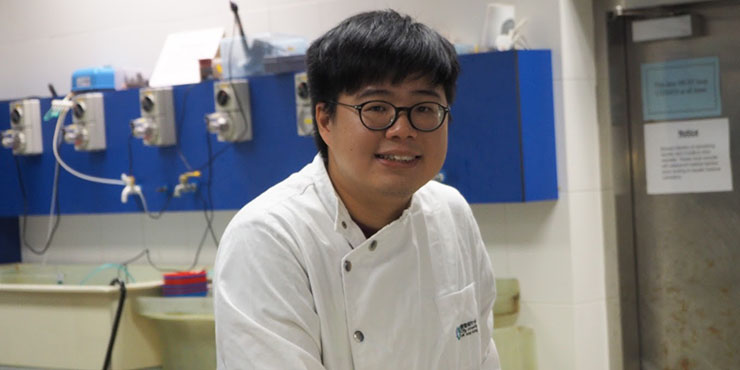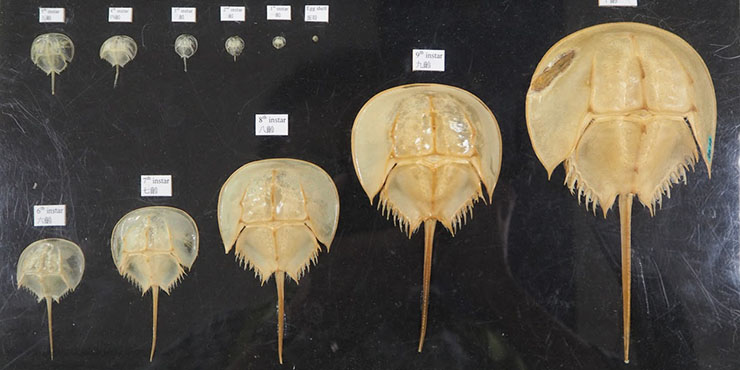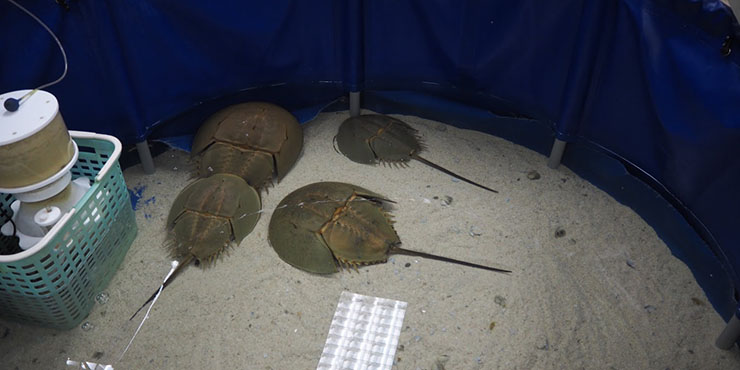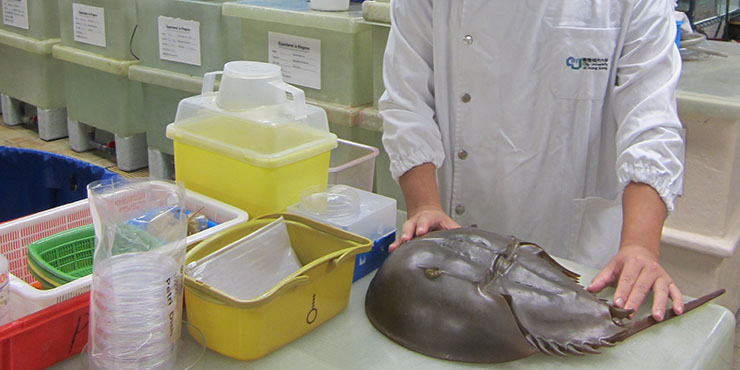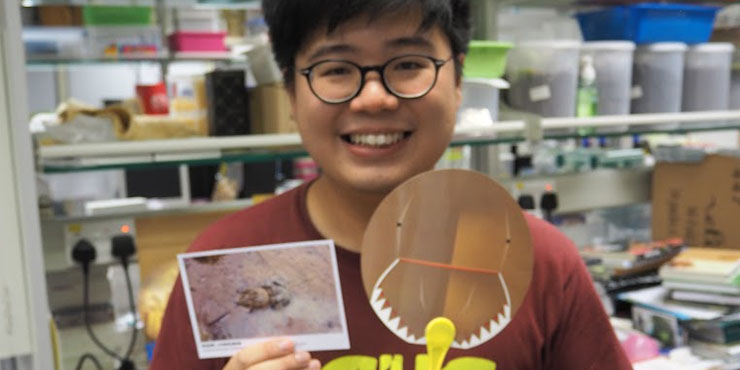|
Launched by Cultural & Sports Committee Day 2015 - Warm Welcome to Freshmen! Enhanced Global Exposure University Life blooded Creatures 2015 Summer Universiade Conservation of the Blue-blooded CreaturesFrom Maipo bird watcher to blue-blooded crustacean guardian, Billy Kwan Kit-yue has become the environmental knight in shining armor working to save an unsightly sea creature in Hong Kong. Originally from Malaysia, Billy came to Hong Kong to study biology at CityU. Currently a Ph.D. student in the Department of Biology and Chemistry, his interest in preserving the natural environment began when he was still in high school in his home country. In Hong Kong, he spent his early days of environmental work at Maipo watching birds. "But I changed since I started working with Professor Paul Shin here at CityU. He is specialised in seabed ecology, worms, you know, all that cheap and ugly stuff. And he studies the horseshoe crab too. That’s how I got involved with the lowly crustacean." But nothing in this world is cheap and ugly. The horseshoe crab’s blood can be used to test many different kinds of bacteria and viruses. “Some countries are doing good a good job and only take about 30% of their blood. Other countries, such as China, would just catch the crab and use the entire animal, from head to tail,” remarked Billy. Protecting the crabs is difficult since they are not an “endangered species” in official terms, so people are free to harvest them from the sea. The work of wild life protection has a complex cultural side. Billy lamented, “Well, when I do environmental work here and show the animal to the community, the first and most frequent question people ask is whether it is delicious.” He has also encountered groups who would buy these animals and “release” them for religious reasons and because of their odd appearance. According to Billy, the horseshoe crabs began to walk on earth about 400 million years ago—even older than the dinosaurs. Because of their ancient biological make-up, they are less capable to adapt to the fast environmental changing, making them vulnerable to extinction. There are only 4 species of them left in the world now. But so far, Billy has managed to train students in 20 local schools to breed small crabs in labs and release them to the sea when they get older. He has also obtained funds for his community education projects for the crabs, mainly sponsored by Ocean Park Hong Kong. What Billy has achieved so far in helping to save the horseshoe crabs in Hong Kong is impressive and is gaining attention in the community. His work surely helps to preserve Hong Kong’s natural coastlines so different sea animals can return and breed. Find out more about Billy’s projects, please see: • Horseshoe crabs in Hong Kong
• Juvenile Horseshoe Crab Rearing Programme
|

